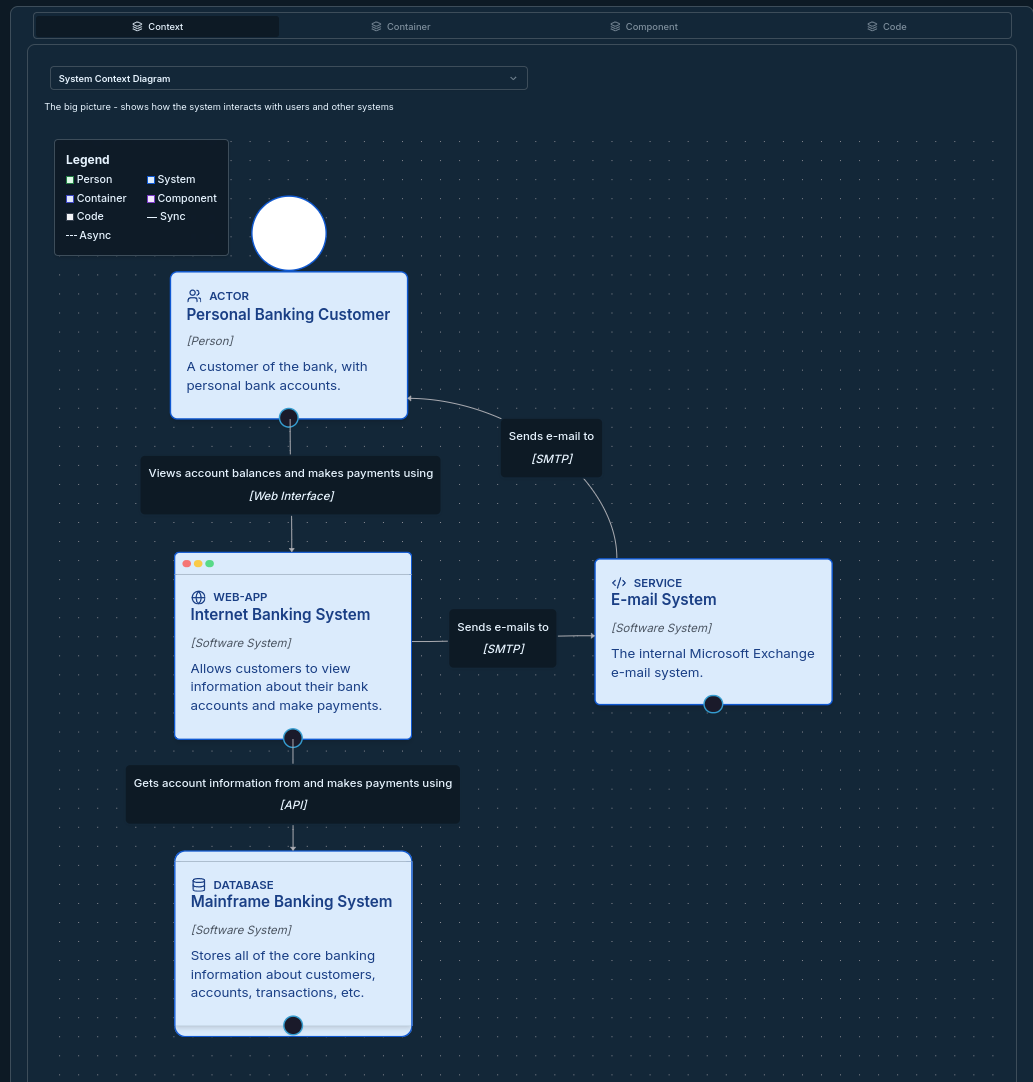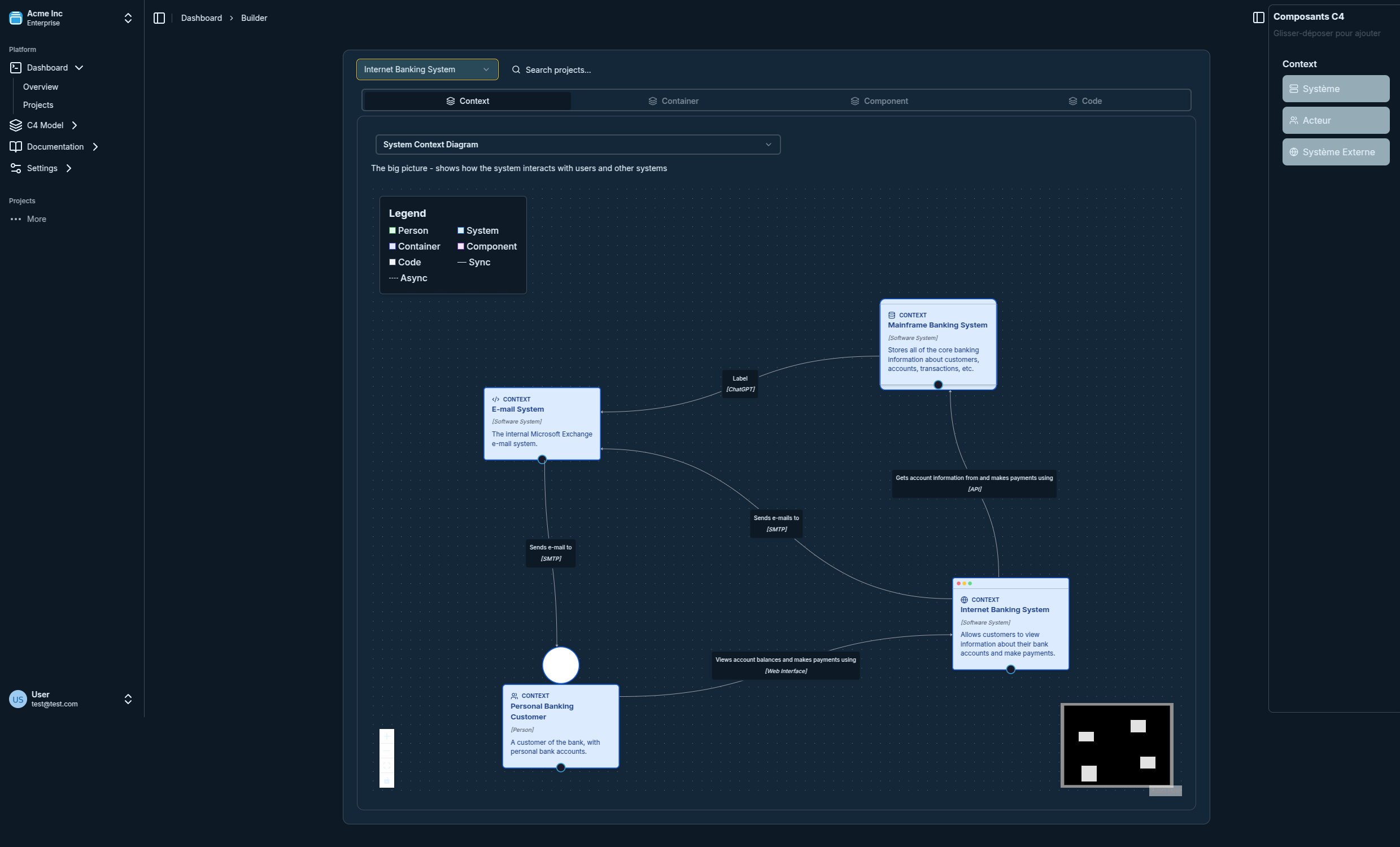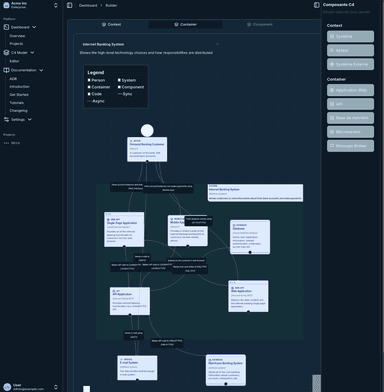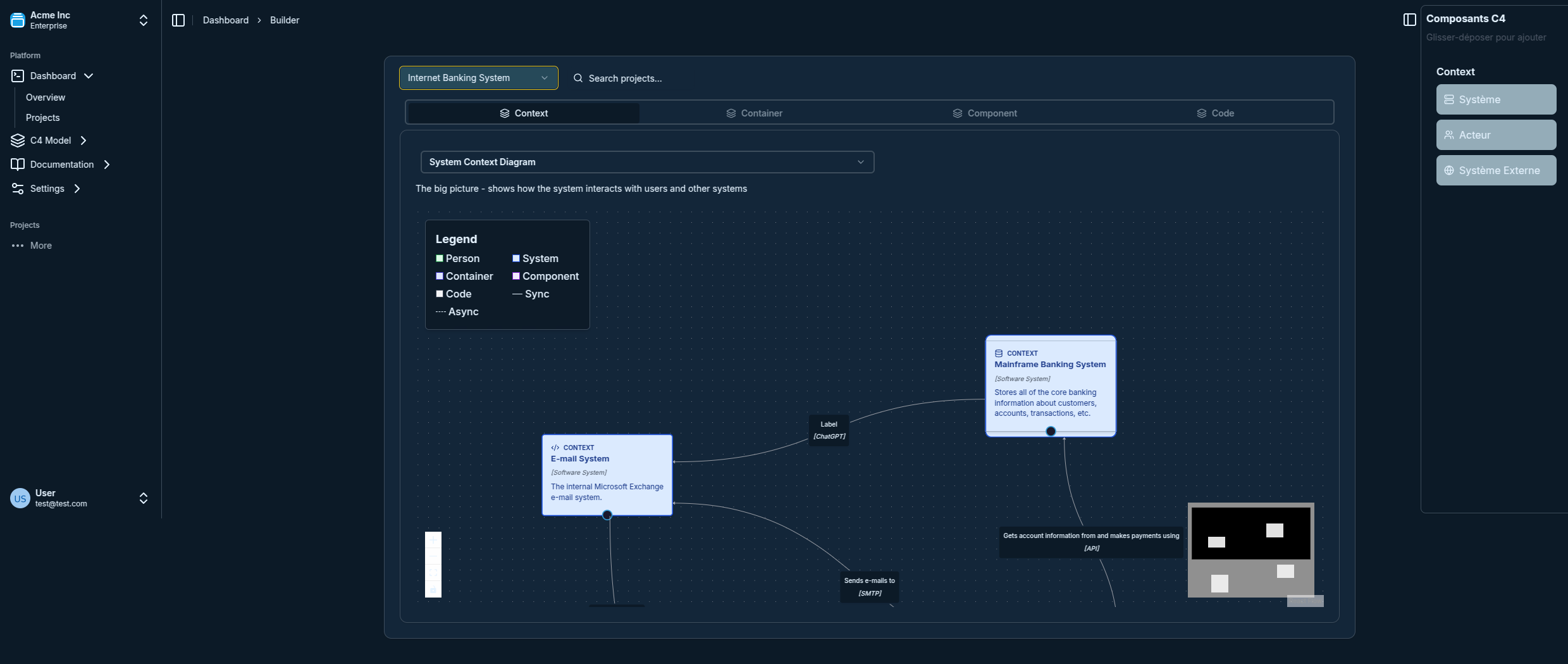C4 Model Tutorial - Complete Beginner's Guide
C4 Model Tutorial: Complete Beginner's Guide
The C4 model is the most practical approach to software architecture documentation. This comprehensive tutorial will take you from zero to creating professional C4 diagrams.
What is the C4 Model?
The C4 model provides a simple, hierarchical way to think about and document software architecture. It consists of four levels:
- Context - System overview and user interactions
- Container - High-level technology choices
- Component - Components within containers
- Code - Implementation details (optional)

Step 1: Start with Context Diagrams
Your first C4 diagram should always be a Context diagram. This shows:
- Your software system as a single box
- Users (people and other systems) that interact with it
- The relationships between them
Context Diagram Example
C4Context
title Online Banking System Context
UpdateLayoutConfig($c4ShapeInRow="2", $c4BoundaryInRow="1")
Person(user, "User", "Bank customer")
System(banking, "Online Banking System", "Internet banking platform")
System_Ext(email, "Email System", "Notification service")
System_Ext(mainframe, "Mainframe Banking System", "Core banking backend")
Rel(user, banking, "Uses for banking")
Rel(banking, email, "Sends notifications via")
Rel(banking, mainframe, "Processes transactions with")
Here's how this looks in practice using our C4 visualization tool:

This real banking system context diagram shows:
- Personal Banking Customer (Person) - The primary user
- Internet Banking System (Software System) - Our core system
- Mainframe Banking System (External System) - Legacy core banking
- E-mail System (External System) - Notification service
Key principles:
- Keep it simple - one box for your system
- Show external dependencies clearly
- Focus on the big picture
Once you're comfortable with this basic structure, our C4 Context Diagram Guide provides templates and advanced techniques for handling complex system boundaries.
Step 2: Break Down into Containers
Once you have your context, zoom into your system with a Container diagram:
- Show the high-level shape of your architecture
- Identify major technology choices
- Reveal key responsibilities
Container Diagram Example
C4Container
title Online Banking System Containers
UpdateLayoutConfig($c4ShapeInRow="2", $c4BoundaryInRow="2")
Person(user, "User", "Bank customer")
Container(webapp, "Web Application", "React, JavaScript", "Delivers banking interface")
Container(mobile, "Mobile App", "Swift, Kotlin", "Mobile banking interface")
Container(api, "API Gateway", "Node.js", "API routing and authentication")
Container(database, "Database", "PostgreSQL", "Stores account and transaction data")
Rel(user, webapp, "Uses", "HTTPS")
Rel(user, mobile, "Uses", "HTTPS")
Rel(webapp, api, "Makes API calls to", "JSON/HTTPS")
Rel(mobile, api, "Makes API calls to", "JSON/HTTPS")
Rel(api, database, "Reads from and writes to", "SQL/TLS")

Container types:
- Web applications
- Mobile apps
- Desktop applications
- Databases
- File systems
Step 3: Detail with Components
For complex containers, create Component diagrams showing:
- Major structural building blocks
- Their responsibilities
- Interactions between components
Component Best Practices
- Group related functionality - Keep cohesive components together
- Show clear interfaces - Make dependencies explicit
- Avoid too much detail - Save implementation for code level
The four-level hierarchy becomes clearer when you see how each builds on the previous. If you want to understand how all levels work together systematically, Understanding C4 Model Levels explains the complete framework.
Step 4: Tools and Templates
Recommended Tools
- Visual C4 - Online collaborative tool with real-time editing
- PlantUML - Text-based diagramming
- Draw.io - Free diagramming tool

Our C4 Visualizer provides a complete interface for creating professional C4 diagrams with drag-and-drop components, real-time collaboration, and export capabilities.
Getting Started Resources
Start creating your C4 diagrams with our free online C4 tool which includes built-in templates for all diagram levels.
Common Mistakes to Avoid
❌ Too much detail too early - Start high-level, then drill down ❌ Mixing abstraction levels - Keep each diagram at one level ❌ Neglecting the audience - Different stakeholders need different views ❌ Static documentation - Keep diagrams updated with code changes
Advanced Tips
1. Use Consistent Notation
- Boxes for containers/components
- Cylinders for databases
- Actors for external systems
2. Add Strategic Information
- Technology choices and justifications
- Key architectural decisions
- Non-functional requirements
3. Link to Implementation
The real power of C4 diagrams comes from connecting them to your actual decision-making process. When you document why you chose certain technologies or patterns using Architecture Decision Records, you create a living system that helps both current and future team members understand not just what you built, but why you built it that way.
Next Steps
Now that you understand the basics, you might wonder how C4 compares to traditional approaches like UML. Our C4 Model vs UML comparison helps you choose the right method for your team and project.
For inspiration on how these concepts apply in practice, browse through real-world C4 examples showing different architectural patterns and industries.
Team Implementation and Scaling
As you move beyond individual C4 creation to organizational adoption:
- Team-Based Architecture Collaboration - Scale C4 practices across distributed teams and ensure consistency
- Future of Architecture Modeling - Stay ahead of trends that will impact how your C4 practice evolves
- Mastering C4 Architecture - Deep dive into advanced C4 techniques and organizational patterns
Start Creating Today
Ready to create your first C4 diagram? Our free online C4 tool supports all four levels with real-time collaboration and export options. No registration required to get started.